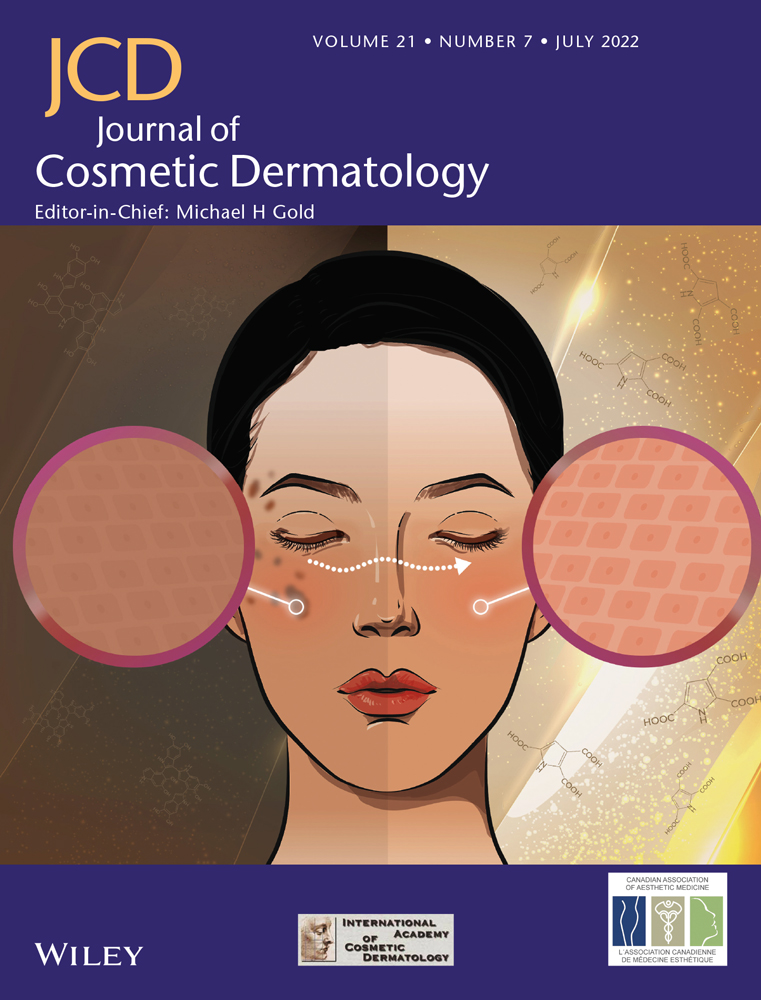Description of a safe doppler ultrasound-guided technique for hyaluronic acid filler in the face—A method to avoid adverse vascular events
Funding information
None
Abstract
Background
Knowledge of facial anatomy is essential for professionals intending to inject hyaluronic acid (HA) into that region, but due to the considerable anatomical variations in region, it does not guarantee the complete safety of the procedure. Similarly, procedures widely disseminated among professionals, such as aspiration and the use of cannulas, do not ensure total safety against vascular occlusion events caused by the filler.
Objectives
This article describes a technique for injecting hyaluronic acid into the face guided by Doppler ultrasonography (DUS) in order to ensure greater safety against vascular occlusion events secondary to the procedure.
Methods
We describe a Doppler ultrasound-guided filling technique, with an 18 MHZ transducer, consisting of three steps: arterial mapping, real-time ultrasound-guided filling, and assessing the perfusion.
Results
The described technique was performed in 480 patients and can be adopted in the routine of professionals who inject hyaluronic acid, especially in areas at high risk for vascular events. Its use results in greater safety against vascular occlusion events secondary to the procedure, without the need for prior aspiration. We conclude that there is a local vasodilation right after the filling that makes it difficult the possibility of extrinsic compression exerted by the filler on the vessel. Furthermore, the product moves to deep planes even with the bevel facing up (toward the epidermis).
Conclusions
We believe that in the future the use of Doppler ultrasound-guided filling technique will be mandatory for professionals who intend to perform HA injection, to both ensure patient safety and provide legal protection for the professional.
CONFLICT OF INTEREST
None of the authors have any conflicts of interest related to this submission.
Open Research
DATA AVAILABILITY STATEMENT
The data that support the findings of this study are available from the corresponding author upon reasonable request.




